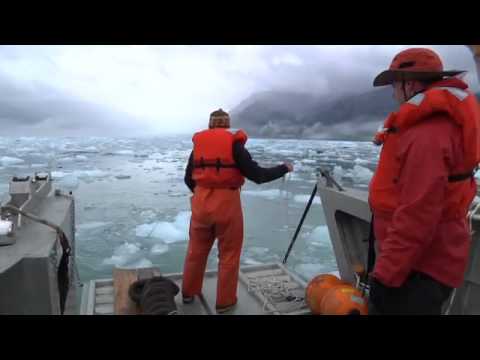Scientists Measure Bubbling Sounds of Melting Glaciers
Glaciers sizzle, squirt bubbles when melting to create loudest marine […]
Glaciers sizzle, squirt bubbles when melting to create loudest marine environment; these sounds could help to measure ice melt.
By Sreeja VN: Sizzling underwater glacial ice, as it melts into warmer sea water, creates one of the loudest natural marine environments, and the air bubbles that pop during the process could help scientists measure the rate of glacier melt and track fast-changing polar environments.
Glacial fjords — long, narrow and deep U-shaped inlets that connect to the sea — sizzle when warm sea water flows into them and melts the edges of glacial ice sheets, releasing air bubbles trapped inside, Erin Pettit, a researcher at the University of Alaska, said in a press release. Pettit, who often heard sputtering and popping sounds while kayaking off the Alaskan coastline, installed underwater microphones to record such sounds off the coast to detect the sounds were much louder undersea than they were above the surface.
“If you were underneath the water in a complete downpour, with the rain pounding the water, that’s one of the loudest natural ocean sounds out there,” Pettit said. “In glacial fjords we record that level of sound almost continually.”
Although Pettit suspected the sounds to emerge from melting ice sheets, to confirm her hypothesis, she recreated the melting process in a controlled environment with the help of Kevin Lee and Preston Wilson, acoustics experts from the University of Texas. URL
Visit the project website ICE exploring, learning, teaching http://ice.gi.alaska.edu
